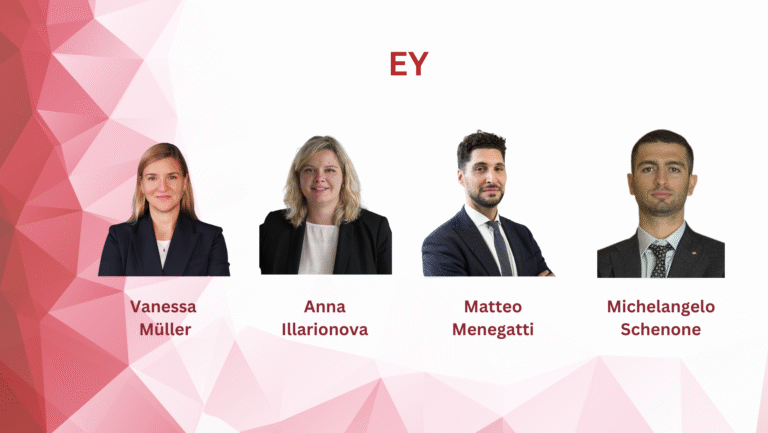Article 168bis sets out the legal framework of the interest limitation rules (ILR) in Luxembourg and entered into force as of 1 January 2019[1].
Article provided by KPMG Luxembourg
On 21 December 2018, to transpose the EU Anti-Tax Avoidance Directive 2016/1164 (ATAD 1) into Luxembourg law, the Luxembourg legislator introduced article 168bis in the Luxembourg income tax law (LITL). This sets out the legal framework of the interest limitation rules (ILR) in Luxembourg and entered into force as of 1 January 2019[1].
Given that the hottest investment strategies of Luxembourg debt funds are direct lending (38%), senior loans (27%) and high yield bonds (17%), and as investment vehicles are often themselves leveraged, market players were eager for the Luxembourg tax authorities to clarify some of the legislation’s highly technical and complex concepts.
On 8 January 2021, the Luxembourg tax authorities issued Circular L.I.R n°168bis/1 (the “Circular”) to guide taxpayers on the more challenging applications of the ILR. The Luxembourg tax authorities updated and expanded the Circular on 2 June 2021, adding other practical examples.
Private debt sector: who is affected?
The ILR apply to Luxembourg resident companies and permanent establishments of non-resident companies that are subject to Luxembourg corporate income tax. Therefore, the ILR are especially relevant to standard Luxembourg resident fully taxable companies (such as “SOPARFIs”), as regulated investment funds are generally exempt from corporate income tax.
For SOPARFIs (or securitization companies governed by the 22 March 2004 Luxembourg domestic law) that are involved in financing plain vanilla performing debts, the ILR shouldn’t trigger adverse Luxembourg tax implications. This is because these companies usually achieve an arm’s length margin and, de facto, don’t need to report any “exceeding borrowing costs” — i.e. their interest income should be higher than their interest expenses.
However, the situation grows more complex for SOPARFIs (or securitization companies governed by Luxembourg domestic law) that are financed with debt and generate income and gains on a portfolio of distressed debt or non-performing debts, which are purchased at a discount compared to their face value that may not be included in the interest income definition or equivalent.
How could the ILR affect private debt players?
These rules affect the exceeding borrowing costs incurred on all types of debt, whether it is interest expenses relating to Luxembourg debt or foreign debt, or whether it is interest due to third parties or related parties.
Article 168bis LITL, which applies as of the fiscal year 2019 for most Luxembourg taxpayers, limits the deductibility of net interest expenses — i.e. deductible interest expenses minus taxable interest income — of up to 30% of the taxpayer’s adjusted EBITDA or EUR3 million, whichever is higher. This is computed annually.
The Circular’s clarifications and examples
The Circular doesn’t only clarify certain rules, definitions and concepts, but also provides welcomed examples to help taxpayers better understand article 168bis LITL and its impact on annual corporate tax returns.
Interest income and symmetry principle
Since the ILR entered into force in Luxembourg, the definition of the “interest income and other income economically equivalent” concept has been a hot topic. While it’s key for taxpayers to determine and compute the exceeding borrowing costs, the Luxembourg legislator didn’t define this concept in detail. In the Circular, the Luxembourg tax authorities address this absence, confirming this concept should follow a symmetrical approach.
In a nutshell, taxpayers must consistently and symmetrically interpret interest income (and other income economically equivalent) to the borrowing costs definition. If accrued expenses are considered as borrowing costs at the debtor level, they should be symmetrically considered as interest income (or other income economically equivalent) at the beneficiary level.
This concept is illustrated in the Circular with the repayment of bonds’ redemption premium. Where it is considered as interest costs at the bond issuer level, this redemption premium should equally be considered as taxable interest income at the bondholder level. Therefore, it should be considered when computing the exceeding borrowing costs and, as a result, decrease the exceeding borrowing costs incurred by the bondholder.
Ordering rule
The Circular also confirms that article 168bis LITL should apply after other LITL provisions that could deny the deduction of operating expenses. These include the transfer pricing provisions, anti-hybrid rules and the Luxembourg participation exemption regime. For example, interest expenses that are non-deductible in Luxembourg due to a transfer pricing adjustment shouldn’t be considered when determining a Luxembourg company’s exceeding borrowing cost amount. Concrete examples illustrating the LITL ordering rule are included in the Circular.
Forex classification
Notably, the Circular sheds light on article 168bis LITL’s non-exhaustive examples of borrowing costs and costs economically equivalent to interest. It clarifies which foreign exchange fluctuations should be considered as other economically equivalent income/expenses and, as a result, be taken into account when determining a company’s exceeding borrowing costs amount.
For example, only foreign exchange losses or gains relating to interest charges incurred on the debt instrument are considered as borrowing costs. While on the contrary, foreign exchange losses or gains relating to the debt’s principal amount shouldn’t be considered as borrowing costs.
Grandfathering clause
The so-called “grandfathering clause” of article 168bis LITL doesn’t restrict the deduction of exceeding borrowing costs incurred on loans concluded before 17 June 2016, but such clause shall not extend to any subsequent modification of the loans’ terms and conditions. The Circular provides several examples of “subsequent modifications” that would jeopardize the grandfathering rule’s application.
Subsequent modifications include changes to the loan’s maturity or principal amount, as well as to the interest rate or the methodology used to compute the interest rate. Changes to one or more parties to the loan also qualify, apart from a merger/demerger if the initial terms and conditions stay the same upon restructuring.
The Circular also clarifies that the exceeding borrowing costs that benefit from the grandfathering clause should be excluded from the 30% threshold EBITDA calculation.
Borrowing costs clarification
Article 168bis LITL broadly defines borrowing costs as either (i) interest expenses on all forms of debt; (ii) other costs economically equivalent; or (iii) expenses incurred in connection with the raising of finance.
The Circular provides a non-exhaustive list of payment examples that should constitute borrowing costs, such as issuance and repayment premiums (primes d’émission et de remboursement) relating to bonds, exchangeable bonds, convertible bonds and zero-coupon bonds.
Snapshot: other points clarified by the Circular
Standalone entity: taxpayers are exempt from the ILR if they are not part of a consolidated group for financial accounting purposes and have no associated enterprises or permanent establishment in a state other than Luxembourg. The Circular lays down three cumulative conditions to be considered a standalone entity.
Loans used for financing infrastructure projects: exceeding borrowing costs incurred on these loans are outside the ILR’s scope. The Circular provides detailed definitions and several examples of a “long-term public infrastructure project”, including a high school, school, public swimming pool, university, public library, etc.
Unused deduction capacity: this is the part that represents 30% of the adjusted EBITDA not used against deductible exceeding borrowing costs for a given year. The taxpayer may carry this unused deduction capacity forward for a maximum of five years, and should be allowed to deduct exceeding borrowing costs of a future year when the maximum deduction capacity of that future year is reached. The Circular provides several examples, and confirms this situation only applies to taxpayers that incurred exceeding borrowing costs of more than EUR3 million.
Carry forward exceeding borrowing costs: the taxpayer may carry non-deductible exceeding borrowing costs forward without any time limits. The Circular illustrates several examples of this mechanism and the extent that tax-neutral reorganizations could affect this carry forward.
Equity escape rule: in their 2 June 2021 update to the Circular, the Luxembourg tax authorities shed further light on how the so-called “equity-escape rule” applies. This rule allows taxpayers to deduct their borrowing costs entirely, if they can demonstrate the ratio of their equity over their total assets is equal to or higher than the equivalent ratio of the group the company is consolidated into for financial accounting purposes.
An important step towards clarity
The ILR are complex; each type of debt transaction must be analyzed on a case-by-case basis. While the Circular does not (yet) address all practical situations or issues that may arise, it represents a positive step towards clarity for Luxembourg taxpayers.
Currently, the Circular does not directly address the ILR’s impact on distressed debts/non-performing loan investments, which are key investment targets of the private debt sector — therefore, these should be closely and carefully structured going forward. However, the Circular’s recent update suggests that the Luxembourg tax authorities may add further practical examples and clarifications in future revisions.
[1] The ILR should apply to taxpayers that have a financial year starting on or after 1 January 2019.




